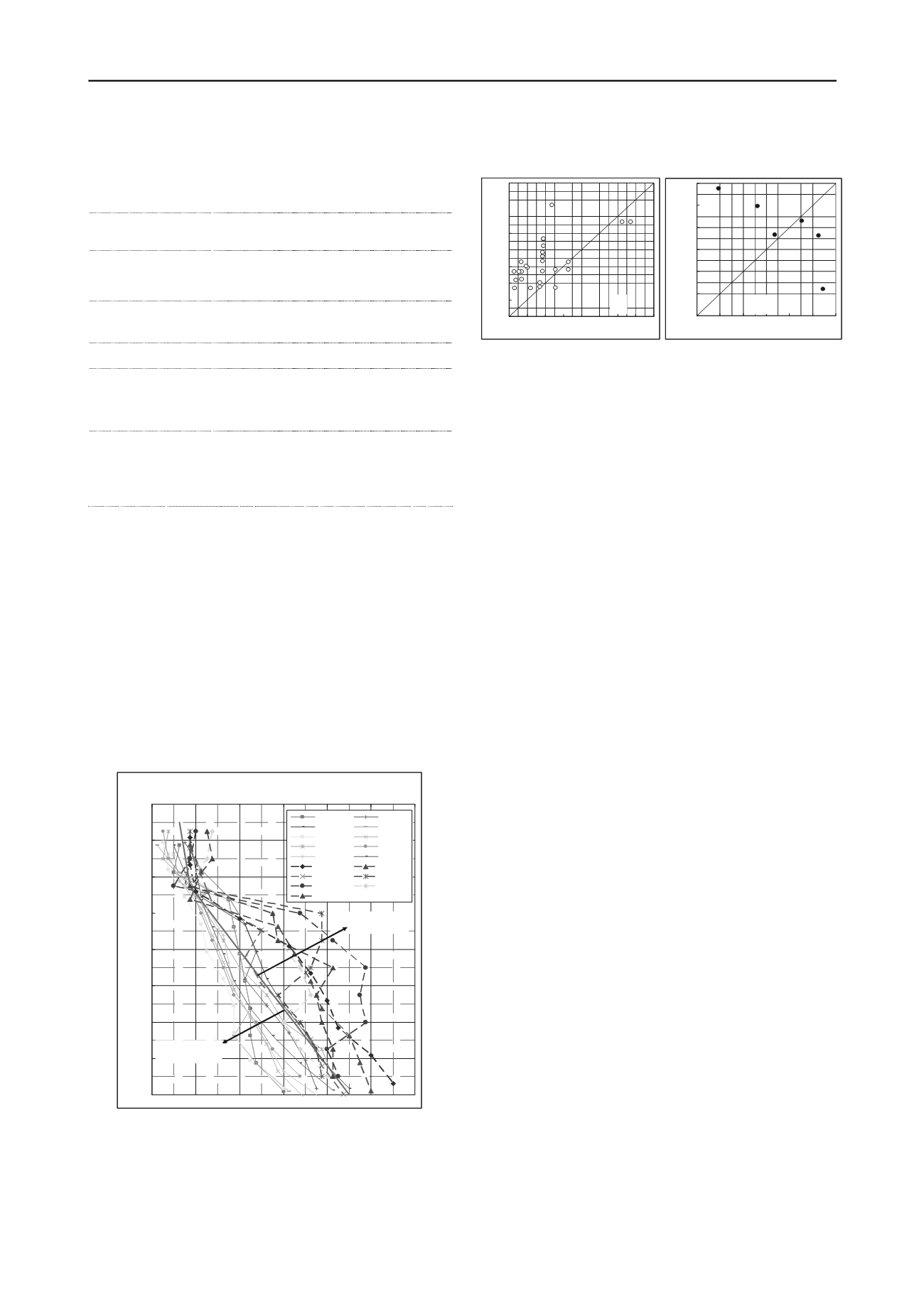
2504
Proceedings of the 18
th
International Conference on Soil Mechanics and Geotechnical Engineering, Paris 2013
the same as the vertical permeability. from the calculations it
appeared that for 5 m surcharge and pVd the target settlement
would occur within 10 to 50 days in different locations.
table 1 comparison of estimated cost and completion time for different
ground improvement methods.
method
time
(month)
cost
(million
Usd)
comments
preloading
36
1.96
reliable
Better assessment of improvement
long time required for
improvement
sand drain
with surcharge 20
3.29
relatively less reliable
installation of drains takes long
time
pVd with
surcharge
14
3.24 reliable
Good control of field operation
dynamic
compaction
11
2.04
Vibration may damage adjacent
facilities
high noise pollution
assessment of improvement
needs lot of field tests
soft pocket
identification,
removal and
improvement,
compacted
backfilling
12
7.25
relatively less reliable
assessment of improvement is
difficult
highly dependent on field
monitoring and control
the pVd used were of 100 mm width, 3 mm thick placed 1m
c/c in triangular pattern. other properties - drain: Water
discharge capacity 90
10
-6
m
3
/s, and 60
10
-6
m
3
/s respectively
at 10 and 350 kpa (i=0.5); core: tensile strength 700 n; filter
jacket: apparent opening size (aos) 90
m, Grab tensile
strength 400 n, elongation at break 50%, puncture resistance
130 n, Burst strength 800 kn/m
2
, permeability 2
10
-4
m/s.
details of the ground improvement work is shown in figure 4.
5 assessment of GroUnd improVement
monitoring of settlement has been made using settlement
plates placed at 25 m grid as shown in figure 1. after
preloading exploratory boreholes were made at selected
locations with field spt and laboratory tests were conducted on
collected undisturbed samples.
figure 5. compares the field spt-n values at several spots
before and after preloading. it can be observed that in the upper
silty clay layer the spt-n values has become twice or more up
to about 3m depth. at about 4~5m, which is the boundary
between the clay and sand/silt layer the spt-n values have not
changed. the field spt-n values are found to increase
significantly in the 'fine sand/silt' layer up to about 12 m.
the unconfined compressive strength of the upper clay layer
before and after preloading can be seen on figure 6(a) for
different locations and depths. in general the unconfined
compression strength has increased at most of the spots.
however, the magnitude of increase is not same. a few data
points lie below the 45 degree line, that apparently shows to
have reduction in strength but quite unlikely. the reason for
these discrepancies may be the variation of non-plastic silt
content in the layer.
in figure 6(b) the recorded settlements are plotted against
the estimated settlement for some of the grid points. out of the
six locations (for which estimates were made) four appear to
match reasonably well. for one location the observed settlement
is about five times the estimated value, which may be due to
presence of localized sand lenses. on the other hand for another
location the observed settlement is one-fifth of the estimated
value, which may be due to clogging or disturbance of the clay
during drain installation. conclusive comments regarding the
variation may be made when data from the remaining project
work become available.
6 conclUsions
the following conclusions can be made based on the design and
field monitoring of the ground improvement work:
1) due to the application of the surcharge with pVd the
consolidation settlement could be achieved within the stipulated
time.
2) Both the spt-n value and unconfined compressive strength
were found to increase satisfactorily due to application of
preload with pVd.
3) the available theories of 1-d consolidation and combined
vertical and radial consolidation used in the design of ground
improvement for the project site using pVd and preload
appeared to have been fairly applicable. predicted and observed
settlement matched reasonably.
7 acKnoWledGements
this research work was carried out in connection with the consultancy
services provided to cpa through Brtc, BUet. the authors would
like to express their sincere thanks to cpa and contractor's personnel
involved in the project.
8 references
Bowels, J.e. (1988) foundation analysis and design, 4th edn.,
mcGraw-hill Book company.
Brtc, BUet report (2009) sub-soil investigation and ground
improvement measures for construction of backup facilities behind
berth 4 & 5 at new mooring container terminal (nct), cpa,
chittagong.
carillo, n.J. (1942) simple two- and three- dimensional cases in the
theory of consolidation of soils.Journ. math. and phy.(21),pp.1-5.
das, B.m. (1983) advanced soil mechanics, international edn.,
mcGraw hill
hansbo, s.(1979) consolidation of clay by band-shaped prefabricated
drains, Ground engineering,(12),5.pp.16-25.
figure 5. Variation of spt-n value before and after loading.
-16
-14
-12
-10
-8
-6
-4
-2
0
0
8
16
24
32
40
48
SPT N-value (uncorrected)
Reduced level, m
E-4 BL
J-2 BL
D-8 BL
D-6 BL
F-5 BL
J-7 BL
L-6 BL
K-8 BL
I-8 BL
I-8 BL
D-8 AL
D-6 AL
F-5 AL
J-7 AL
L-6 AL
K-8 AL
I-8 AL
Before loading
Data points
After loading
Data points
figure 6 comparison of (a) unconfined compressive strength and
(b) observed and estimated settlement .
0
50
100
150
200
250
300
350
400
0 50 100 150 200 250 300 350 400
q
u
, kPa (Before loading)
q
u
, kPa (Afterloading)
0
100
200
300
400
500
600
0 100 200 300 400 500 600
Estimated settlement, mm
Observed settlement,mm
(a)
(b)


